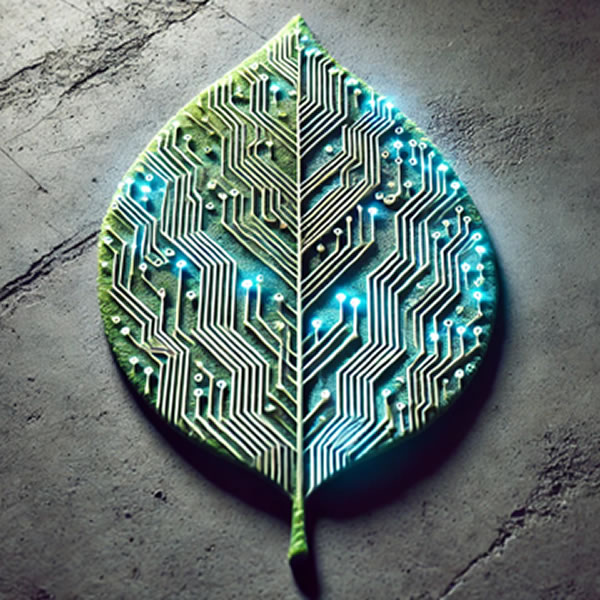In the race against climate change, the construction industry plays a crucial role. It’s responsible for nearly 40% of global carbon emissions. As the world becomes more urbanized, demand for new buildings and infrastructure is growing.
But traditional construction methods are unsustainable. This is where artificial intelligence (AI) comes into play. AI is transforming how we design, build, and manage our built environment.

By making construction smarter and more efficient, AI is helping us move toward a greener society. Imagine a world where every building project minimizes waste, reduces energy consumption, and leaves a smaller carbon footprint. AI technology is making this vision a reality.
From smart design tools to advanced materials management, AI is changing the game. It’s helping construction companies innovate and adopt more sustainable practices. The result? Buildings that are not only environmentally friendly but also cost-effective and resilient.
Let’s explore how . The design phase of construction is critical for determining a building’s environmental impact. Traditional design processes often overlook energy efficiency, leading to buildings that consume excessive power.
AI is revolutionizing this by offering intelligent design tools that optimize energy use from the outset. AI algorithms can analyze vast amounts of data to create energy-efficient designs. These tools assess factors like sunlight, wind direction, and insulation.
By doing so, they help architects design buildings that naturally stay warm in winter and cool in summer. This reduces the need for heating and cooling systems, cutting down on energy consumption. Moreover, AI can simulate different design scenarios to find the most sustainable options.
For example, AI tools can compare the environmental impact of different building materials. This allows architects to choose materials with the lowest carbon footprint. By integrating AI into the design process, we can create buildings that are both beautiful and eco-friendly.
Construction sites are notorious for generating waste. From unused materials to excessive packaging, traditional building methods contribute significantly to landfill waste. AI technology is tackling this issue head-on by optimizing the construction process and minimizing waste.
AI-powered tools can track and manage materials more efficiently. They ensure that only the necessary amount of materials is ordered and used. This reduces the surplus that often ends up as waste.
Additionally, AI can predict potential problems in the construction process. By identifying issues early, AI helps prevent mistakes that could lead to costly rework and material waste. Furthermore, AI can streamline the logistics of construction projects.
It can plan the most efficient delivery routes, reducing fuel consumption and emissions. On-site, AI can monitor equipment usage to ensure machinery operates efficiently. These innovations not only reduce waste but also lower the carbon footprint of construction projects.
The sustainability of a building doesn’t end once construction is complete. How a building is operated and maintained plays a significant role in its environmental impact. AI is now being used to manage building operations in a way that enhances sustainability over the long term.
AI-driven systems can monitor and control building energy use in real-time. These systems analyze data from sensors placed throughout the building. They adjust lighting, heating, and cooling systems based on occupancy and weather conditions.
This ensures that energy is only used when and where it’s needed, significantly reducing waste. In addition, AI can predict when building systems need maintenance. By identifying issues before they become major problems, AI helps extend the life of building systems.
This reduces the need for replacements, saving resources and lowering the environmental impact. Beyond the construction site, AI is transforming how building materials are produced and supplied. The production of cement, steel, and other materials is a major source of greenhouse gas emissions.
AI is helping to develop more sustainable production methods and streamline supply chains. For instance, AI can optimize the production process to reduce energy use and emissions. In cement production, AI can adjust the chemical process to minimize carbon output.
It can also analyze how much cement is needed in a concrete mix so can be optimized. AI also enhances supply chain management by improving transparency and efficiency. AI systems can track the environmental impact of materials throughout the supply chain.
This allows companies to choose suppliers with the lowest carbon footprint. Additionally, AI can optimize delivery schedules to reduce transportation emissions. The concept of a circular economy is gaining traction in construction.
Instead of the traditional take-make-dispose model, a circular economy focuses on reusing materials and reducing waste. AI is a powerful tool for implementing circular economy principles in construction. AI can track materials throughout their lifecycle, from production to disposal.
This data allows for better recycling and repurposing of materials. For example, AI can identify materials in a building that can be reused in future projects. This reduces the need for new resources and lowers environmental impact.
Moreover, AI can help design buildings that are easier to deconstruct and recycle. By planning for the end of a building’s life at the design stage, AI ensures that materials can be recovered and reused efficiently. This approach supports a more sustainable, circular construction industry.
AI technology is not just a tool for improving efficiency; it’s a catalyst for a fundamental shift in how we approach construction. By integrating AI into every stage of the building process, from design to operations, we can significantly reduce the environmental impact of our built environment. As AI continues to evolve, its potential to drive sustainable construction practices will only grow.
The construction industry is at a crossroads. With urbanization on the rise and the effects of climate change becoming more pronounced, there’s an urgent need for greener solutions. AI offers a path forward, enabling us to build smarter, more sustainable buildings.
By embracing AI technology, we can not only meet the demands of today but also protect our planet for future generations..




















